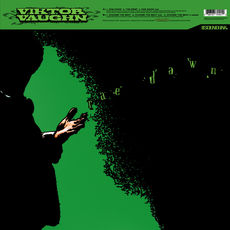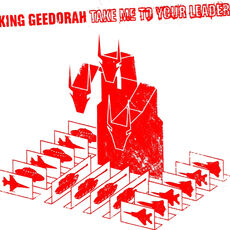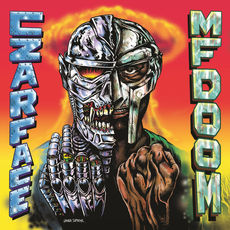Daniel Dumile, alias MF DOOM, lived a thousand lives and his career was a succession of false starts and bright flashes. Before passing away on the 31st of October, 2020, Dumile had been a young virtuoso rapper welcomed with open arms by the music industry, then an outcast that sneaked back onto the scene through the back door after years of wandering (now masked), the 'go-to-guy' of independent rap during the 2000s and then some kind of Indie messiah as dubbed by Thom Yorke and Flying Lotus. Elusive, whimsical, a trickster and a money maker, DOOM rewrote the rules of rap music, rubbed people up the wrong way and paved the way for a whole generation of MCs.
The story began in Long Island, New York, at the end of the 1980s. Daniel Dumile, born in 1971 in England, originally chose the alias Zev Love X and teamed up with his little brother Dingilizwe aka DJ Subroc and MC Rodan (soon to be replaced with another MC, Onyx) to form the group KMD, standing for "Kausin Much Damage". Dumile met rapper MC Serch from Queens through a mutual friend and, thanks to Dumile’s talent as a rhymer, Serch offered him the chance to write a verse for a track on 3rd Bass’s (Serch’s group) album, which would later be released by the Def Jam label. The track was The Gas Face, the second single from The Cactus Album which remains to this day Daniel Dumile/Zev Love X/MF DOOM’s greatest commercial success. He was noticed by Dante Ross (Elektra Records representative), who discovered De La Soul when he was working for the label Tommy Boy, KMD were set to write their first album Mr. Hood. The recording of the album took place at night in a studio in Manhattan, more than an hour away from their homes and it was released in May 1991. "It’s Brand Nubian with a sense of humor" according to John Caramanica from Spin magazine or "Soul without choruses" according to Peter Shapiro. Despite never really being part of the collective Native Tongues group (A Tribe Called Quest, Jungle Brothers, De La Soul…), who shared the limelight of New York rap during the transition from the 80s and the 90s with the Juice Crew (Marley Marl, Biz Markie and Big Daddy Kane), KMD’s formula and state of mind weren't too different: funk, soul and blues samples (Billy Paul, Isley Brothers, Donny Hathaway…) and political and Afrocentric lyrics.
Mr. Hood isn’t the most famous New York rap album from the early 90s (and its commercial success at the time is all relative), but it is an important building block for the genre. It could have been the start of a prestigious career for the Dumile brothers, but fate dictated otherwise. When KMD’s second album, Black Bastards, was being delivered to the label, Subroc (Dingilizwe) was hit by a car and died. That same week, Elektra decided to not release Black Bastards, the album cover (depicting a hanged black man) and content (more radical than Mr. Hood) were judged to be too controversial and KMD lost their record deal. In a way, this is where the legend of MF DOOM started.
In 1993, far from the limelight, Daniel Dumile reappeared, incognito, on open mic stages in New York, among which was the famous Nuyorican Poets Café, an institution on the Lower East Side where Saul Williams first emerged. Upon his return Dumile covered his face with a stocking and later with a metallic mask, he played a renegade character filled with vengeance, halfway between Marvel’s Doctor Doom and The Phantom of the Opera. This time he was under the alias MF DOOM and signed to the Fondle ‘Em label headed by Bobbito Garcia (who was then the co-host of the legendary Stretch Armstrong and Bobbito Show on the college radio WKCR). He released three Maxi-CDs, before a first album called Operation: Doomsday, released in April 1999.
With samples from Isaac Hayes (Dead Bent), Quincy Jones (Rhymes Like Dimes), Sade (Doomsday) and The Beatles (Tick, Tick…) Doom released tracks contravening the most elementary rules of hip-hop, with deconstructed beats and an unorthodox flow, which took brand new rhythmic liberties, Operation Doomsday was an avant-gardist rap album which was quickly labeled as cult music. When Sub Verse, Bigg Jus’s label (Company Flow), gave Dumile a decent cast in 2001, his music became the Grail of underground rap enthusiasts and MF DOOM quickly became a quasi-mythical figure.
As soon as 2001 came around, Doom released a series of instrumental albums, the Special Herbs, which would span over ten volumes and from which he would pinch tracks from throughout his career. He took advantage of his special status on the independent rap scene to sign contracts with some high-profile labels. For Big Dada, the hip-hop sub-label of the English electro label Ninja Tune, he gathered all the members from the collective Monsta Island Czars (Rodan, a short-lived member of KMD, Megalon, MF Grimm) around samples from B-movies and battered soul loops to make Take Me To Your Leader under the alias King Geedorah, referring to the three-headed dragon from the Godzilla movies. For the New York label Sound-Ink, a group of producers that were fond of syncopated electronic beats, he invented the alter-ego Viktor Vaughn and developed his skills as a twisted storyteller, who made the most unlikely references clash with one another.
In March 2004 one of the most important records of MF DOOM’s career and a major work for the independent rap scene was released on the Californian label Stones Throw: Madvillainy was a collaboration with producer Madlib as Madvillain. Both were as inscrutable and mysterious as eachother, another thing the pair had in common was their introverted choice of living arrangements (Madlib in his studio in Los Angeles, and MF DOOM in an apartment in the Atlanta suburbs). Madlib’s entourage convinced the producer to make an album with Doom in 2002, before Doom had fully resurfaced. There were two years between the first time Doom heard a CD of Madlib’s work and the release of Madvillainy. “I received offers from many producers at that time. I wasn’t familiar with Madlib’s work but he had a good reputation”, said Doom in 2012. “He gave me thousands of instrumental pieces. With him, everything is already in place, I simply write around the beat. The samples are already there, and the only thing I had to do was to find a concept.”
Create a free account to keep reading





